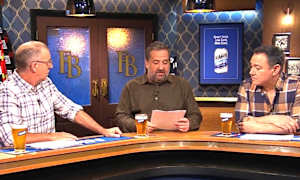THERE were further positive signs during the week that authorities are finally taking the risks posed by Bass Coast’s hazardous surf beaches more seriously, regrettably after a disturbing number of deaths by drowning over the summer.
And continuing the largely unsung but extensive efforts of the local surfing community to reduce the number of deaths at our beaches, GippSport partnered with Surfing Victoria and local clubs Bass Coast Boardriders, Phillip Island Boardriders and Inverloch Surf Lifesaving Club to deliver two sessions of Surfing Victoria’s water safety program ‘Surfers Rescue 24/7’, both of which were well attended.
These sessions provided practical support and advice for those on the scene at local beaches, in the water or on the shore, when others get into difficulty or require assistance.
Among the key messages delivered at the sessions was do not attempt any sort of rescue or support without a flotation device, either a surfboard or boogie board, and you are under no obligation to do anything except call for help if you don’t feel confident enough about your own abilities.
But the reality is that surfers often share warnings about unsafe conditions with visitors and help people getting into difficulty to safety, so the sessions offered by Surfing Victoria and GippSport were very well received. Good job.
Local foreshore managers, including the Bass Coast Shire Council, Parks Victoria and Phillip Island Nature Parks also placed some new, improved warning signs at beaches and added Variable Message Signs (VMS) along the access points into the area over the recent holiday weekend.
But it doesn’t take away from the fact that the 162-page ‘Bass Coast Shire Coastal Risk Assessment Report’ completed by Life Saving Victoria’s Aquatic Risk & Research Department in mid-2019, as part of the Surf Life Saving Australia Beach Drowning Black Spot Reduction Program and funded by the Australian Government for local agencies; Bass Coast Shire, Phillip Island Nature Parks, Parks
Victoria and San Remo Foreshore Committee of Management was not released until the end of January 2024.
The report makes an assessment of most of Bass Coast’s hazardous beaches, not including Forrest Caves ironically, where the mass drowning occurred on Wednesday, January 24, and makes several key recommendations about what needs to be done to reduce the already recognised risk of drowning.
For example, it says “it is recommended that land managers within BCS commit to a systematic monitoring and review process. Continuous monitoring and review of hazards ensures that new hazards are detected and managed and linked to modification or maintenance of existing action plans.”
One of these “new hazards” has been the dramatic rise in the number of visitors to Phillip Island of South Asian heritage, coming out of the rapidly expanding suburbs in the SE Melbourne Metro area, lacking the experience and education of the hazards that exist. It’s a risk that should have been recognised and addressed.
So, why was that report buried and not acted upon for almost five years?
Claims have been made that certain people and organisations did not want a report that quoted high hazard scores for popular beaches like Cape Woolamai and Smiths Beach, as well as probable drowning data and rescue statistics released for fear it would impact tourism.
An inquiry into what happened this summer and a new report, with recommendations about what happens next, must be a priority for our land managers and local MPs.









